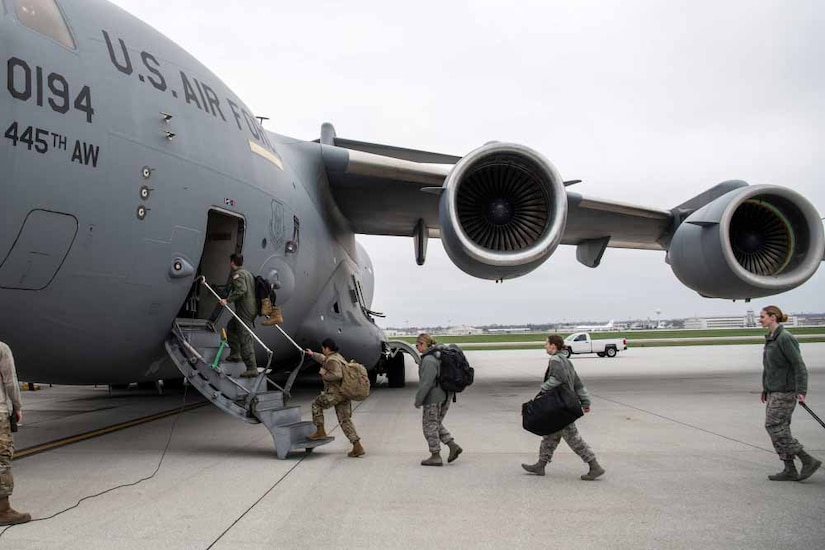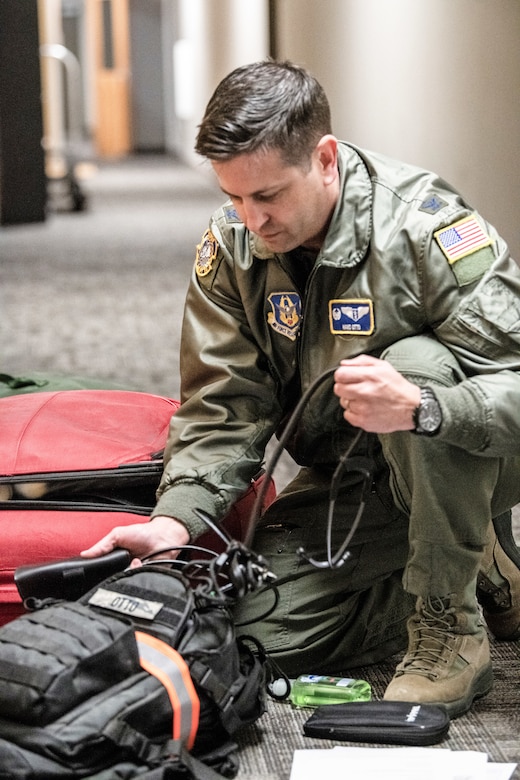Since the beginning of the coronavirus pandemic, researchers have been working as quickly as possible to crack the code of the virus. Understanding ways the virus can be detected is an important aspect to the scientific research.
Air Force Senior Master Sgt. Sarah Katoski, superintendent of medical readiness at the 445th Aeromedical Staging Squadron, works as a molecular biologist in the bioscience's division of the Army's Chemical Biological Center at Aberdeen Proving Ground in Edgewood, Maryland.

"My research is centered on biological defense," Katoski said. "Our mission is traditionally standoff detection, which means minimal clinical work. However, due to our capabilities, we have been tasked with developing, testing and validating different efforts focused on coronavirus research to combat the pandemic."
Katoski's work has been focused on developing a rapid sequencing tool capable of detecting the virus not only in clinical but also in environmental samples such as air or water. Such a tool exists for detection of bacteria samples, but using it to identify a virus is more complex, she said.
"Since the outbreak, some of us have been deemed 'essential' to continue ruggedizing our system to make a field forward sequencing capability sensitive enough to detect the virus but equally reliable," Katoski explained. "This is ongoing."

Detecting the virus has been the focus of much attention since the pandemic began. According to the Centers for Disease Control and Prevention, two tests are available for COVID-19: viral tests and antibody tests. COVID-19 is primarily a respiratory illness caused by a coronavirus that can spread from person-to-person even asymptomatically.
The sergeant said her research is concentrated on being able to detect the virus in nature, such as air, soil and water, which is more difficult than isolating and diagnosing a virus from a human sample.
"I am very excited about our work with air sampling and threat detection," Katoski said. "This type of science will help develop a technology that has the potential to directly impact our ATSO [ability to survive and operate] capabilities. For example, understanding the airflow of a C-17 and minimizing the recirculation of contaminated air by rapidly identifying, detecting and decontaminating the source will exponentially reduce ground time."
"Other efforts I am supporting are testing and evaluating clinical isolates on new COVID-19 diagnostic tests, some have already been deployed to the testing sites," Katoski said. "We have been working with our engineering group to develop mobile labs for the Army. We have to add certain pieces of equipment for rapid detection testing."
Additionally, the Edgewood facility has been supporting other agencies with personal protective equipment, providing face masks and gloves to both civilian and government entities.

"Moving forward, our goal is to leverage national resources, so that the DOD can support force health protection to better protect and posture the military to maintain operational readiness, assist FEMA lead national and local responses, and defend soldiers, civilians and their families in the national fight against pandemics," Katoski said.
As a member of the 445th ASTS, Katoski supports the work of her fellow airmen and their frontline contributions to the ongoing pandemic; as some members of the unit recently deployed to New York to work in the hard hit areas of the state.
"The amazing work the doctors, nurses and medical professionals are doing to combat COVID-19 on the front line while we, scientists, work from the laboratory to mitigate this and even those at home who help flatten the curve is extremely commendable,'" Katoski concluded.
(Air Force Airman 1st Class Erin Zimpfer is assigned to the 445th Airlift Wing.)






No comments:
Post a Comment